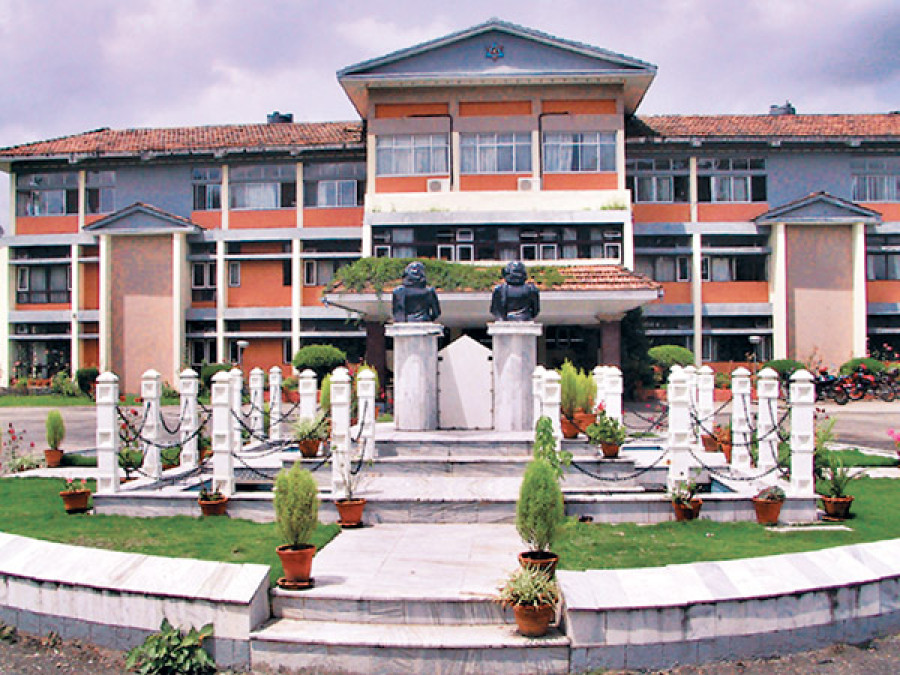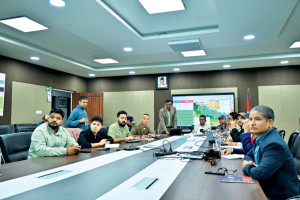Miscellaneous
Two more, too many
Experts say instead of adding two more universities, the government should invest its focus and budget on improvement of existing ones.
Post Development Bureau
At a time when the existing varsities are facing various problems, ranging from budget crunch, decline in number of students to lack of infrastructure, experts say the government’s decision to add two more universities is a short-sighted one.
Tribhuvan University (TU), the oldest varsity of the country, is presently struggling to manage pension and retirement funds for its staff. Similarly, the Lumbini Buddhist University is trying hard to sustain with barely 300 students. The number of students in Nepal Sanskrit University (NSU) is also decreasing while three newly established universities Far-Western (FW), Mid-Western (MW) and Agriculture and Forestry (AF) are facing operational problem due to lack of infrastructure.
Instead of addressing the problems seen in these universities that are teetering on the brink, the government is focused on adding two more universities. On November 6, 2014, the Cabinet meeting forwarded the draft bills of Nepalgunj University Act and Rajarshi Janak (RJ) University Act for finalisation. The government is currently preparing to table the two bills in Parliament for approval.
A report from University Grants Commission (UGC), the government body to regulate the universities in the country, shows the number of students has increased by around 62 percent from fiscal year 2008/09 with 284,973 to 452,571 in the last fiscal year. It also shows that the number of the colleges too have increased by one third to 1,276 from 880 during the same period. However, the government budget to university education is going down which has increasing financial burden on the students. The last five years trend of TU shows that the fees in all faculties were increased by six-fold.
Kedar Bhakta Mathema, an education expert and former vice-chancellor of TU, says the government is gradually withdrawing its hand from the education, increasing the dominance of the private sector which is being reflected in university education. “Over 83 percent Nepali don’t get to have higher education. If the government funding goes down in the current manner the children from marginalised community will never have access to it,” Mathema says.
Academicians believe that sustainability should be given a due priority before adding new universities. They claim that decision to add new universities are politically motivated, done without assessment or feasibility study.
The government effort to add two more universities justifies the claim of academicians, as the proposed Nepalgunj University is located in the electoral constituency of Prime Minister Sushil Koirala in Banke district while RJ University is in the home district of Nepal Congress leader and Minister for Local Development Bimalendra Nidhi.
Tirtha Khaniya, an education expert and former member of the National Planning Commission, has argued in his reports that Prithvi Narayan Campus (PNC), Pokhara, has over 10,000 students while Mahendra Multiple Campus, Nepalgunj, hardly has one third of the PNC students. He has recommended that PNC should be given due priority if there is a need for a new university. He has warned that the universities could face sustenance problem if they are established without proper homework.
The UGC reports shows the number of student in NSU is just 1,691 while the number of faculties. The university which used to attract hundreds of students earlier is losing its charm, as the students do not see the future prospect of studying Sanskrit. The per student investment in NSU is the highest among nine universities in the country, suggesting that a huge amount of money from the state coffer is being misused.
Academicians also argue that this is not a proper time to set up the new universities, as the country is expecting a new constitution with the provision of federalism. The country should first endorse Higher Education Policy to set the priority of the higher education and the universities should be established accordingly, they say.
The UGC has already tabled the policy at the Ministry of Education for approval. However, despite directives from the Education Sub-committee of Parliament, the ministry has not taken any initiative to endorse the policy that was tabled last year. Similar is the case with the Higher Education Act which would guide the establishment of new universities. Though its bill was drafted five years ago, there has not been any initiative to endorse it so far.
GOING BY THE NUMBERS
Universities Number of Students Number of Teachers
Tribhuvan 500,717 7,966
Purbanchal 25,796 61
Pokhara 24,380 119
Kathmandu 12,954 200
Mid-Western 2,472 100
Nepal Sanskrit 1,691 770
Far-Western 787 71
Lumbini Buddhist 302 NA
Agriculture and Forestry 140 770
Source: UGC




 20.12°C Kathmandu
20.12°C Kathmandu









